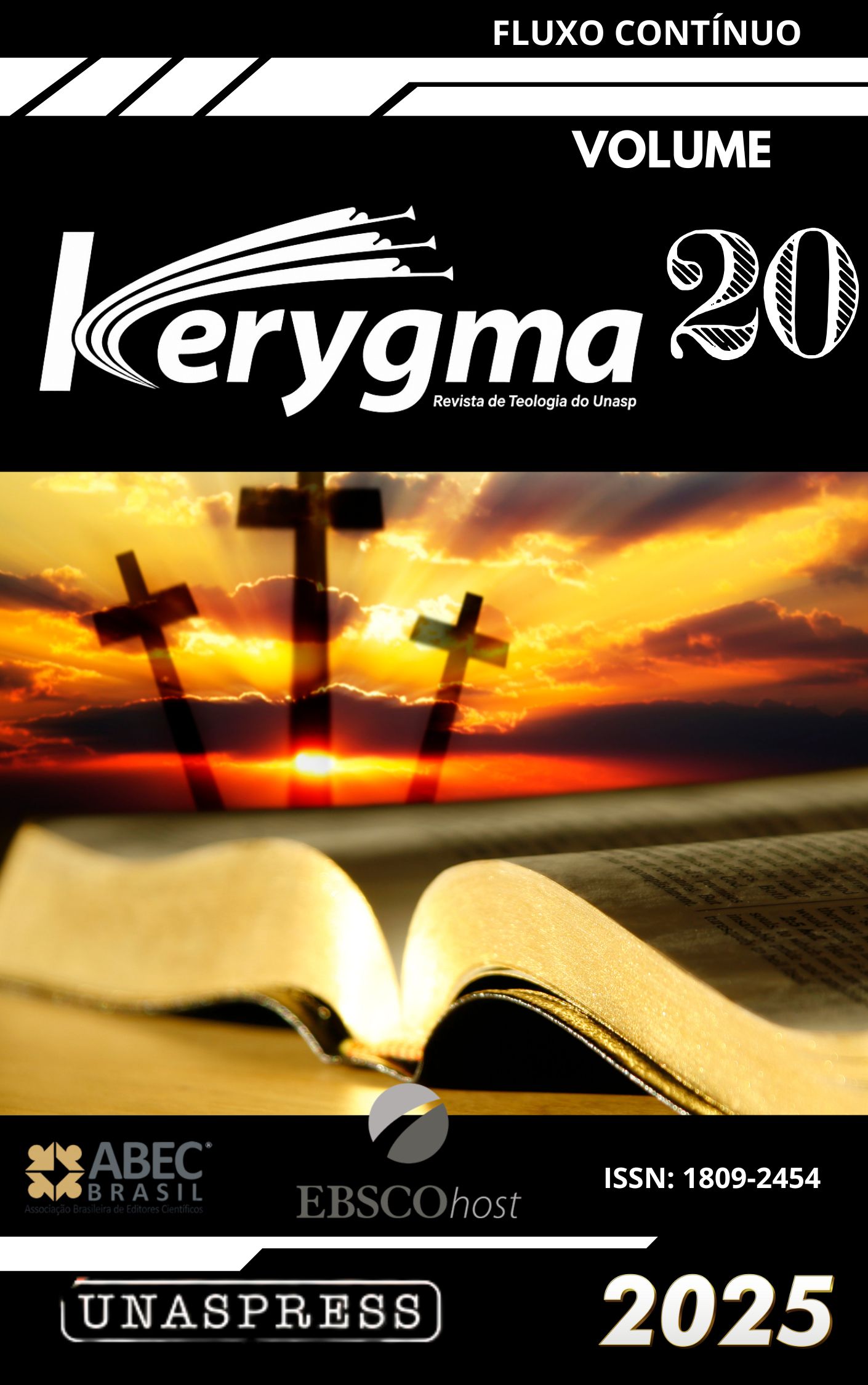Abstract
Interpreters generally consider that Babylon is remembered by God during the seventh bowl of the wrath (cf. Rev 16:19). After this, God would pour out his wrath upon her. However, according to Revelation 15:1 and 16:17, God’s wrath is completely satisfied throughout the first six bowls and when the seventh bowl is poured out “on the air.” Even before the theophanies of the seventh bowl, God declares himself satisfied with the execution of bowl’s judgment, with the statement “It is done!” Furthermore, in the most predominant reading of this textual unity, God would have remembered Babylon to give her the cup of the wrath after the “great city” was divided into three parts, or completely destroyed, which would suggest an anachronism in this section (Rev 16:17-21). Questions of structure and linguistic aspects must be analyzed in order to clarify the meaning of the vision of Revelation 17 after the seven plagues, and what kind of relationship this account has with the vision of the seven plagues (Rev 16). This article uses an exegetical methodology with structural analysis in the search for more answers to these questions. The hypothesis defended here is that Revelation 17 does not report a later event nor an unfolding of the seventh bowl, but an explanation of the fifth and sixth plagues.References
AUNE, D. E. Revelation 1-5. Dallas, TX: Word, 1997. (Word Biblical Commentary, v. 52a).
AUNE, D. E. Revelation 6-16. Nashville, TN: Thomas Nelson, 1998. (Word Biblical Commentary, v. 52b).
BEALE, G. K. The book of Revelation. Grand Rapids, MI: Eerdmans, 1999. (The New International Greek Testament Commentary).
BROWN, C. (ed.). The new international dictionary of the New Testament theology. V. 2. Grand Rapids, MI: Zondervan, 1978.
COLLINS, A. Y. The combat myth in the book of Revelation. Eugene, OR: Wipf and Stock Publishers, 2001.
CUSTER, S. From Patmos to paradise: a commentary on Revelation. Greenville, SC: BJU Press, 2004.
DORNELES, V. Adorai aquele que fez: a narrativa da criação e o clímax do grande conflito em Apocalipse 12 a 14. Revista Criacionista Brasileira, n. 100, 2019, p. 6-21.
FARRER, A. A rebirth of images: the making of St. John Apocalypse. Nova York: State University of New York Press, 1986.
FIORENZA, E. S. The book of Revelation: justice and judgment. Mineápolis, MN: Fortress, 1998.
JOHNSON, A. F. Revelation. In: GAEBELEIN, F. E. (ed.). The Expositor’s Bible Commentary. Grand Rapids, MI: Zondervan, 1981. v. 12.
KISTEMAKER, S. J. Revelation. Grand Rapids, MI: Baker Academic, 2001. (New Testament Commentary).
KOESTER, C. R. Revelation: a new translation with introduction and commentary. New Heaven, CT: Yale University Press, 2014. (The Anchor Yale Bible).
KRODEL, G. A. Revelation. Minneapolis, MN: Augsburg Publishing House, 1989. (Augsburg Commentary on the New Testament).
LARONDELLE, H. K. Armageddon: sixth and seventh plagues. In: HOLBROOK, F. B. (ed.). Symposium on Revelation, book 2: exegetical and general studies. Silver Spring, MD: Biblical Research Institute, 1992, p. 373-390. (Daniel and Revelation Committee Series).
LARONDELLE, H. K. Chariots of salvation: the biblical drama of Armageddon. Hagerstown, MD: Review and Herald, 1987.
LÉVI-STRAUSS, C. The structural study of myth. The Journal of American Folklore, v. 68, n. 270, p. 428-44, 1955.
METZGER, B. Breaking the code: understanding the book of Revelation. Nashville, TN: Abingdon, 1993.
MICHAELS, J. R. Interpreting the book of Revelation. Grand Rapids, MI: Baker, 1992.
MOUNCE, R. H. The book of Revelation. ed. rev. Grand Rapids, MI: Eerdmans, 1977. (The New International Commentary on the New Testament).
MUELLER, E. When the prophecy repeats itself: recapitulation in Revelation. Silver Spring, MD: Biblical Research Institute, 2015. (Biblical Research Institute Release, v. 14).
MURPHY, F. J. Fallen is Babylon: the Revelation to John. Harrisburg, PA: Trinity Press, 1998.
NICHOL, F. D. (ed.). Comentário bíblico adventista do sétimo dia. Tatuí, SP: Casa Publicadora Brasileira, 2014.
OSBORNE, G. Revelation. Grand Rapids, MI: Baker Academic, 2002. (Baker Exegetical Commentary on the New Testament).
PAULIEN, J. Armageddon at the door. Hagerstown, MD: Review and Herald, 2008.
PAULIEN, J. Decoding Revelation’s trumpets: literary allusions and the interpretation of Revelation 8:7-12. Berrien Springs, MI: Andrews University Press, 1988. (Andrews University Seminary Doctoral Dissertation Series, v. 11).
RICOEUR, P. The symbolism of evil. Boston: Beacon, 1963.
ROTZ, C. Revelation: a commentary in the New Testament. Kansas, AK: Beacon Hill Press, 2012.
SMALLEY, S. S. The Revelation of John: a commentary on the Greek text of the Apocalypse. Downers Grove, IL: InterVarsity, 2005.
STEFANOVIC, R. Revelation of Jesus Christ: commentary on the book of Revelation. 2. ed. Berrien Springs, MI: Andrews University Press, 2009.
THOMAS, J. C. The Apocalypse: a literary and theological commentary. Cleveland, TN: CPT Press, 2012.
WELLCOME, I. C. History of the second advent message and mission, doctrine and people. Yarmouth, ME: I. C. Wellcome, 1874.
WHITE, E. G. Notes of travel. Review and Herald, 25 nov. 1884.
WHITE, E. G. O grande conflito. 42. ed. Tatuí, SP: Casa Publicadora Brasileira, 2004.

This work is licensed under a Creative Commons Attribution 4.0 International License.
Copyright (c) 2025 Kerygma

